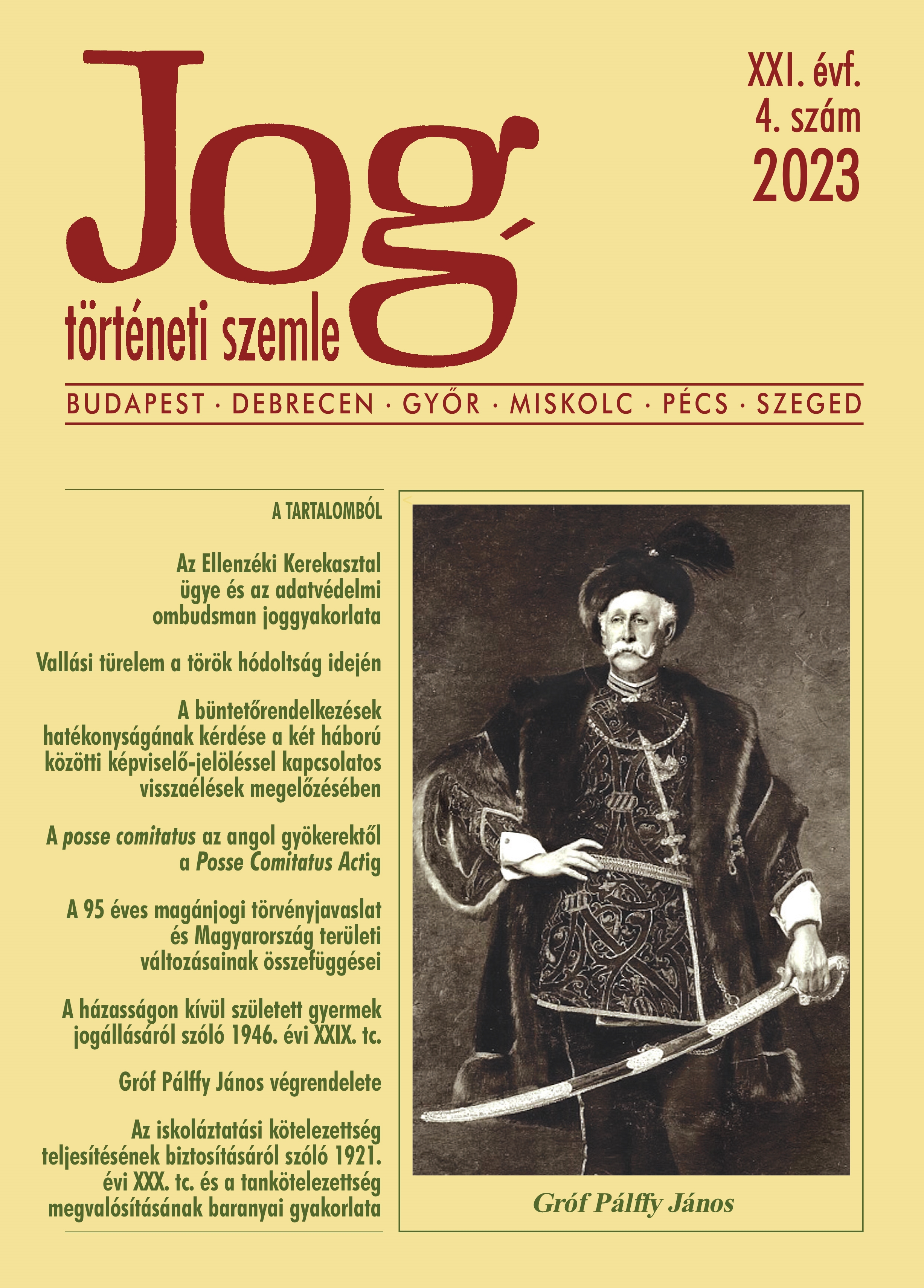Zusammenhänge zwischen dem Entwurf des ungarischen Zivilgesetzbuches 1928 und den territorialen Veränderungen Ungarns
DOI:
https://doi.org/10.55051/JTSZ2023-4p29Abstract
Einer der Gründe, warum das ungarische Parlament den Entwurf des ungarischen Zivilgesetzbuches nicht verabschiedete (und auch nicht diskutierte) war die Befürchtung, dass die bisherige privatrechtliche Einheit Ungarns mit den infolge des Friedensvertrags von Trianon annektierten Gebieten zerbrechen würde. Zwar gab es in den von dem Vorschlag erfassten Rechtsgebieten keine großen Veränderungen in der Tschechoslowakei, Rumänien oder Jugoslawien, doch hätte die Verabschiedung eines solchen Gesetzbuches die Rechtssicherheit in Ungarn auf ein höheres Niveau gehoben und damit das Gewohnheitsrecht an den Rand gedrängt. Darüber hinaus wäre es nach der erhofften territorialen Revision einfacher gewesen, die Vereinheitlichung des Privatrechts durch ein schon bestehendes Zivilgesetzbuch zu erreichen. Als Ungarn zwischen 1938 und 1941 einen großen Teil seiner ehemals annektierten Gebiete zurückerhielt, erweiterte die Regierung den Geltungsbereich des ungarischen Privatrechts durch Dekrete (dazu galt das Mandat des Parlaments als Grundlage), aber diese Lösung war eher problematisch, insbesondere im nördlichen Siebenbürgen, wo die Bestimmungen des ABGB noch in Gebrauch waren. Da viele Teile des Entwurfs durch die Gerichtspraxis zum Teil des Privatrechts wurden, spielte er eine gewisse Rolle bei der Vereinheitlichung des Rechts, allerdings nicht als Gesetzbuch, sondern als sonstige Rechtsquelle. Er wurde in den Urteilen der Gerichte der infolge des Zweiten Wiener Beschlusses neu eingegliederten Gebiete herangezogen, solange diese Gebiete unter der Gerichtsbarkeit des ungarischen Staates blieben. Die Rolle des Entwurfs endete nicht mit dem Ende des zweiten Weltkrieges, als Ungarn die zurückgewonnenen Gebiete wieder verlor, denn er diente als Ausgangspunkt für die Ausarbeitung des 1959 verabschiedeten ungarischen Zivilgesetzbuches.






